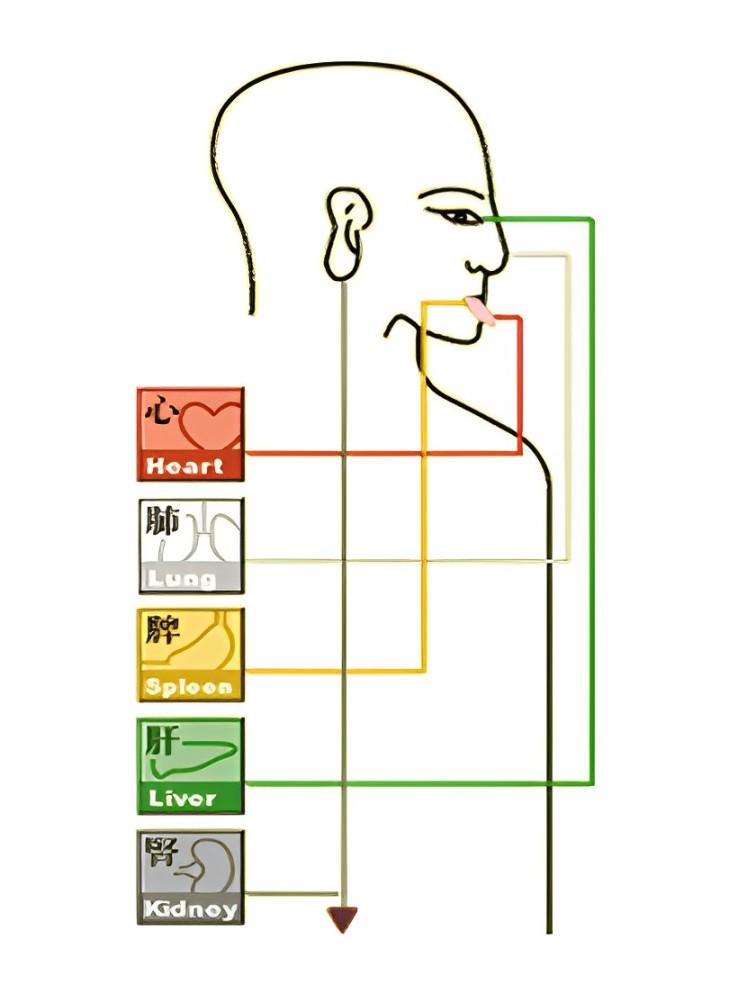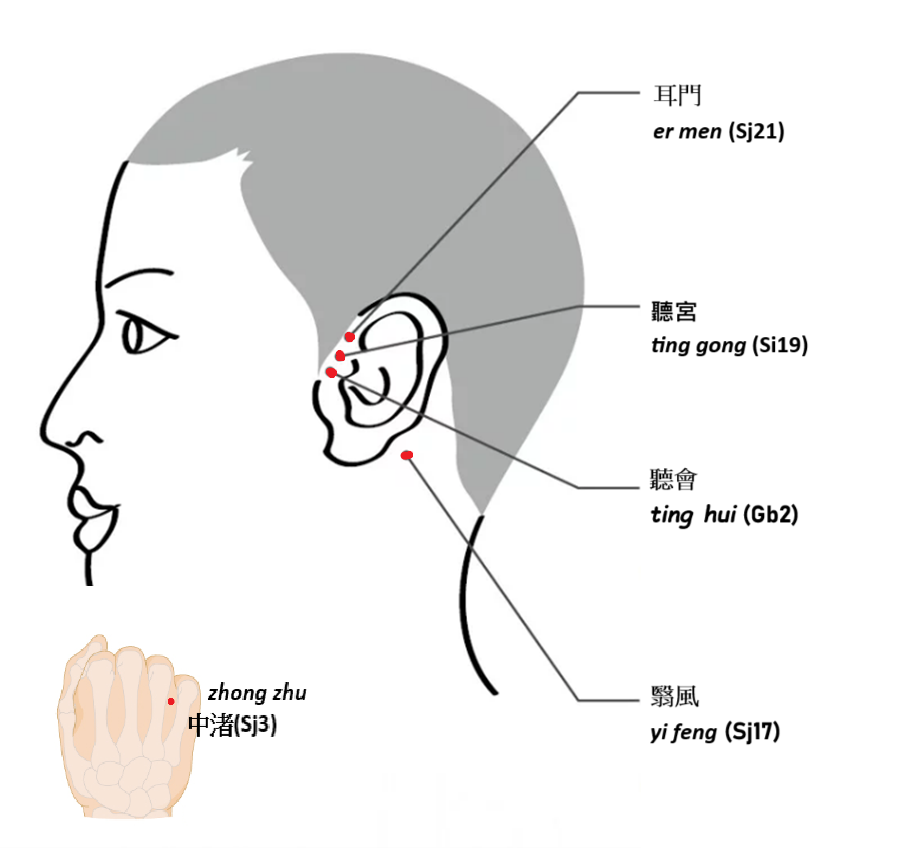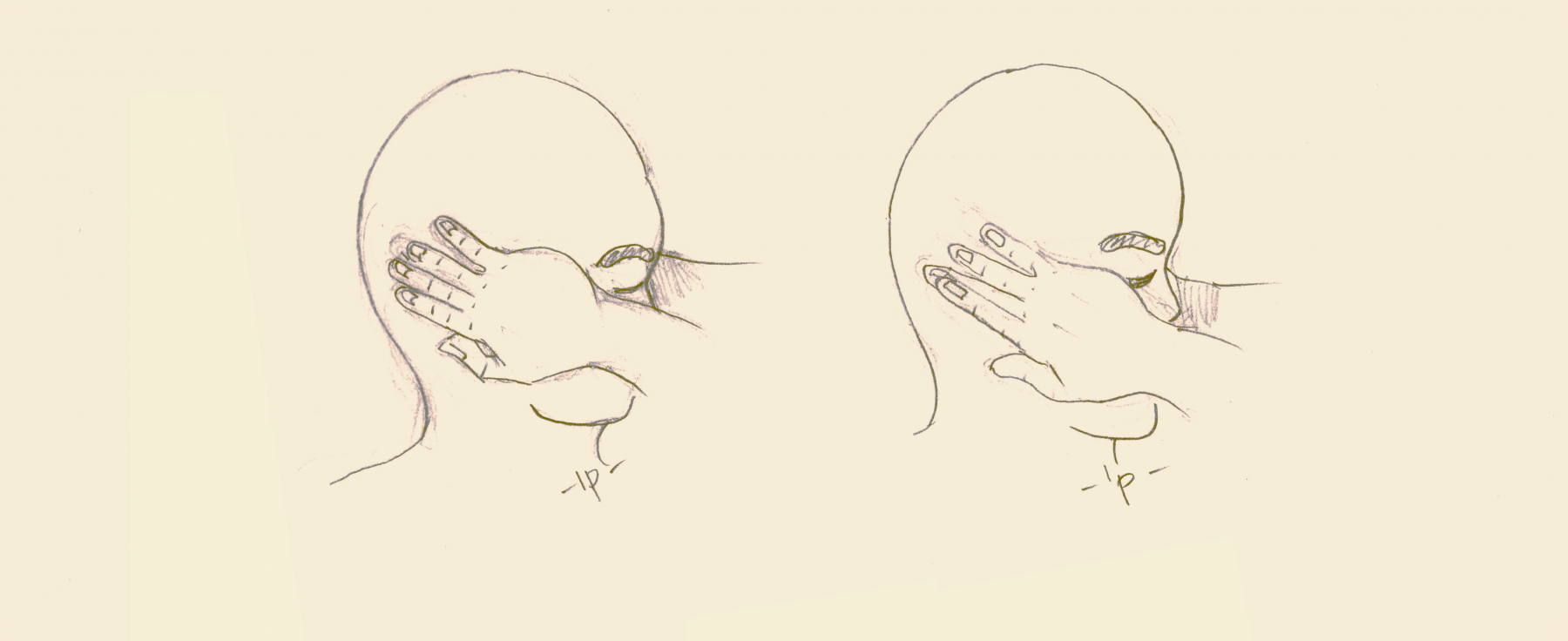Ear ringing (tinnitus) is a functional disturbance of the auditory system that can result from a variety of
causes, both physical and stress related.
The sound heard in the ears is not from an external source. These phantom noises can easily make individuals feel anxious or annoyed, which in turn can further worsen the symptoms of ear ringing considerably. Ways to calm the body and reduce the noises are always beneficial, and so Chinese medicine physicians often suggest their patients some self-help practices at home.
Chinese massage or acupressure involves applying pressure, kneading, and stretching techniques to specific points on the body surface. Massage has been proven to provide numerous benefits for ear ringing. By stimulating selected points, massage promotes blood and lymphatic circulation, removes local stagnations, restores impaired tissues, reduces muscle tension, and enhances nervous and hormonal regulation. All these effects help the body cope with ear ringing and relieve the accompanying stress. Incorporating Chinese massage into a daily routine can greatly contribute to the management of ear ringing.

In Traditional Chinese Medicine (TCM) theory, the ears are considered the openings of the
kidney system on the head; sharp hearing indicates that the system is functioning properly. It is claimed that the link between the ears and kidney is through the brain, as the ears connect with the brain and receive nutrients from it. The kidney is responsible for storing essence and producing marrow, these nutrients are then sent to the brain (also known as the
Sea of Marrow) through the
Kidney and
Governor Vessel Meridians. When kidney
essence is abundant and nourishes the ears, hearing is sharp and discerning. However, when the kidney becomes deficient and the Sea of Marrow is insufficient, it can easily lead to symptoms such as dizziness, ear ringing, forgetfulness, cognitive decline, blurred vision, and lower back weakness. Massaging the tissues around the ears can help alleviate ear-related symptoms.
Clinically, physicians will select specific body points and massage techniques based on the disharmony pattern of ear ringing, the patient’s overall conditions will be considered for TCM diagnosis. Click to see the
protocols.
At home, massage can be routine practice for individuals to relieve or prevent their ear ringing problem. Just follow the steps as below:
Acupressure protocol (I) for ear ringing
Preparations: Take a deep breath, pinch your nostrils, close your mouth and eyes, then blow hard to puff up your cheeks and force air into your ears. You should feel outward pressure on your eardrums. Hold the pressure for 10-15 seconds each time and repeat 3-5 times. If you have a runny nose, blow your nose first before doing this. This practice helps exercise the ear canals, reduce ear pressure, balance the inner and outer ear, and relieve ear ringing.
1.Kneading er men (Sj21)
This acupoint is located at front of the ear, near the supratragus notch, where a depression forms when you open your mouth. Use the pad of your thumb to knead and rub the acupoint for 2-3 minutes, applying even pressure. Perform this on both sides simultaneously. Stimulating the point helps improve hearing and benefit the jaw.
2.Kneading ting gong (Si19)
This acupoint is located at front of the ear, one of the three points in front of the tragus, where a depression forms when you open your mouth. Use the pad of your middle finger to knead and rub the point for 5-6 seconds, then release for 3 seconds before kneading again. Repeat 5-10 times on both sides. Stimulating
ting gong helps open the ear
and calm the mind.
3.Kneading ting hui (Gb2)
This acupoint is located at front of the ear, one of the three points in front of the tragus, where a depression forms when you open your mouth. Use the pad of your middle finger to knead and rub the point for 5-6 seconds, then release for 3 seconds before kneading again. Repeat 5-10 times on both sides. Stimulating
ting hui helps dispel
wind evils, improve hearing, and benefit the jaw.
4.Pressing yi feng (Sj17)
This acupoint is located behind the earlobe, in the depression between the mastoid process and the lower jawbone. Place your index and middle fingers together on this point and knead for 5-6 seconds until you feel a sore and swollen sensation. Relax for a moment, then knead again. Repeat 5-10 times on both sides. Stimulating yi feng helps benefit the cheek muscles, improve hearing, and correct facial asymmetry.
5.Pressing zhong zhu (Sj3)
This point is located on the back of the hand, in the depression between the 4th and 5th metacarpal bones when making a half-fist. Use the pad of your thumb to press and rotate on the point for 5 seconds, then relax and press again. Repeat 5-10 times on each side. Stimulating zhong zhu helps clear heat and improve hearing.
Performing these steps twice a day help stimulate the area around the ears, improve blood circulation, and relieve ear ringing.
 Acupuncture points for ear ringing
Acupuncture points for ear ringing
Acupressure protocol (II) for ear ringing
Beating the Heavenly Drum is a traditional self-practice that involves tapping the back of the head frequently. It is claimed that this method can stimulate certain acupoints and nerves in the ears, promote blood circulation, and balance qi (energy flow). Physicians often recommend this practice for those with hearing loss, people who frequently use headphones, and the elderly.
The steps: keep the head and neck in straight right position, cover the ears firmly with the palms and let all the fingers press on the occipital bone behind the head; make the two middle fingers meet; place the index fingers on the middle fingers, and then allow the index finger to slip down hardly and flick on the back of head, this creates a rumbling sound inside the ear. Beat on the left side 24 times, then beat on the right side 24 times, finally beat on both sides 48 times. Practice several times a day.
 Beating the Heavenly Drum
Beating the Heavenly DrumMassage is a simple and convenient method at home for ear ringing management. However, it can't substitute for conventional treatment, you still need to consult a medical professional for proper tinnitus management. This is because tinnitus could be a symptom of a wide range of conditions, such as hypertension or ear infections. While home remedies can relieve symptoms temporarily, professional diagnosis and treatment ensure a complete cure.




